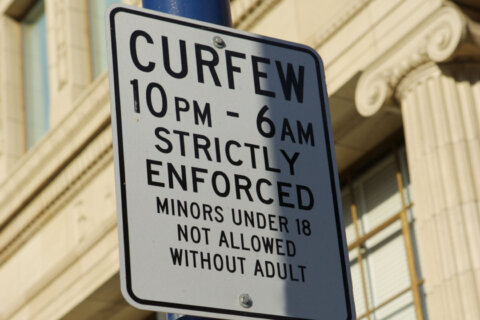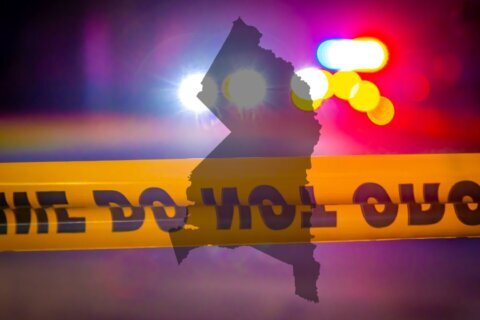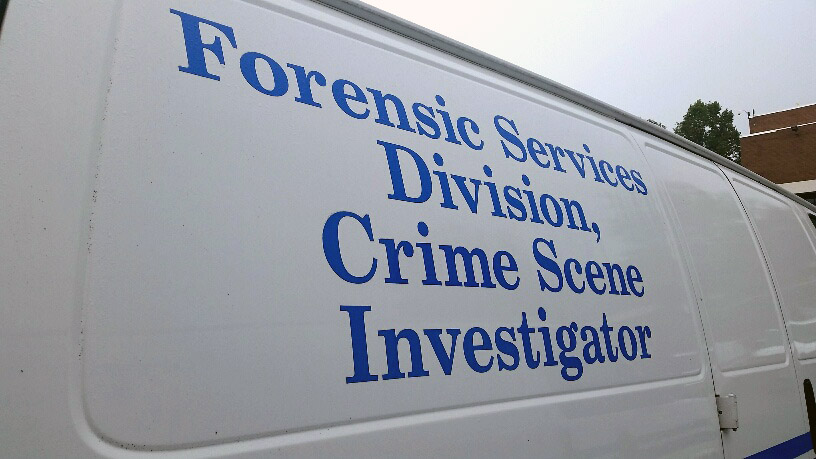
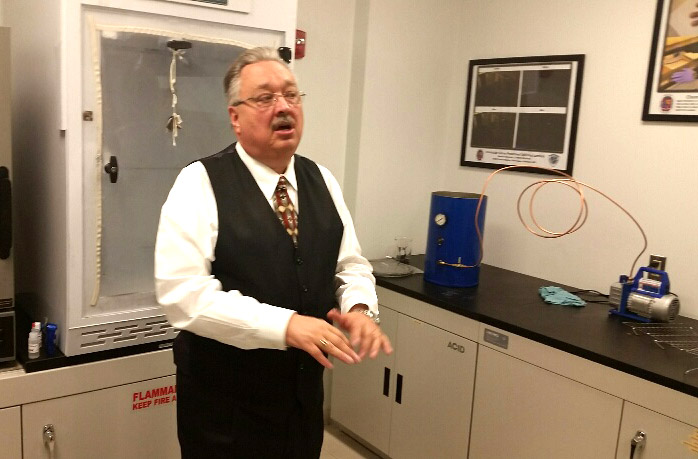
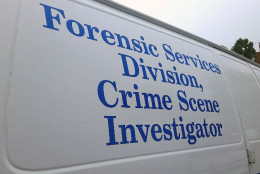
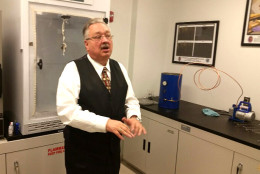
WASHINGTON — WTOP went inside the Prince George’s County Police Department’s forensic division for a tour of a real life version of CSI, one that helped solve the Beltway sniper shootings.
Like the CBS hit show “CSI,” the department’s Crime Scene Investigation Division Evidence Unit uses technology to help solve crimes. But what actually takes place behind that yellow crime tape? The media was given a quick lesson this week.
Forensic science doesn’t lie, says Bill Greene, director of technical operations for the Crime Scene Investigation Division. He has more than 30 years of experience in the field of evidence collection.
“Now testimonial evidence, people see different things, their memory changes. But the evidence doesn’t lie,” Greene says.
Evidence can clear a suspect or lead police to new clues as in the case of the Beltway sniper shootings that terrorized the D.C. region more than a decade ago.
For example, Greene says using bullet trajectory helped in the Beltway sniper case. With the use of lasers, investigators can study a bullet’s trajectory to determine where the shooter was when that person fired the gun.
On Oct. 7, 2002 a 13-year-old boy was critically wounded outside of Benjamin Tasker Middle School in Bowie.
Greene says they asked the hospital, where the boy had been taken, to figure out the trajectory of the child’s wound.
“They (the hospital) came back and said it is a slightly upward trajectory. We did reverse trajectory and that put us in the area where we know where the shot came from,” Greene says.
Before that, police had been looking at a location up on a hill by the school. But the new information gave them the correct location, where they found a spent cartridge casing, as well as a tarot card.
Forensic evidence plays a critical role in modern police work, but unlike the TV show, police don’t cover the body of a crime victim in order to preserve any evidence from contamination, Greene says.
Greene says there are men and women in this field who suffer PTSD because of the things they see. But he says what keeps him going is to be able to give a voice to a person who has been silenced forever such as a homicide victim.
“We’re speaking for a victim that can’t speak for themselves,” he says.
PGPD forensics lab demo of using lasers to determine bullets trajectory. @wtop pic.twitter.com/K90xRqtPuT
— Kathy Stewart (@KStewartWTOP) September 30, 2015


